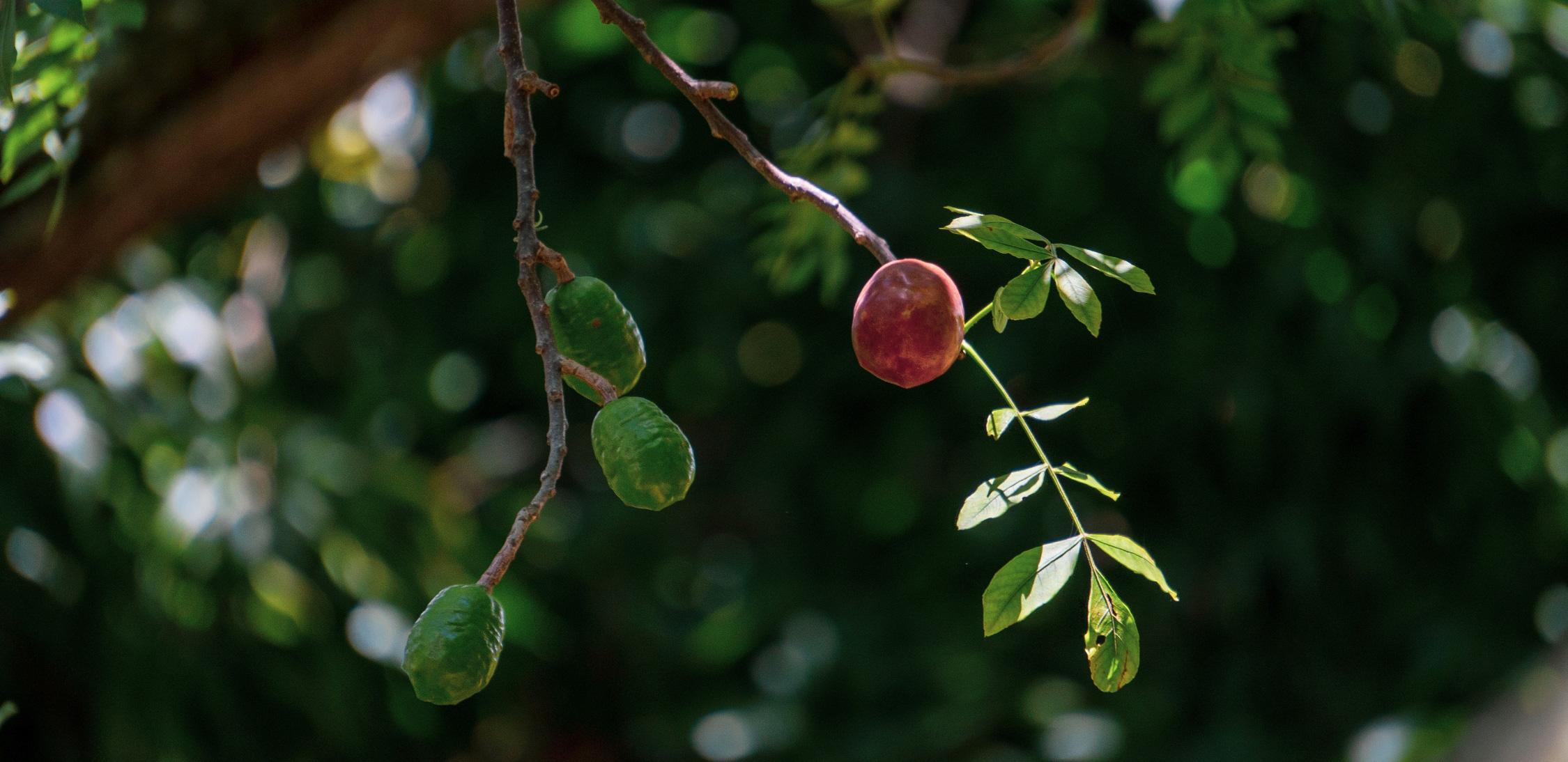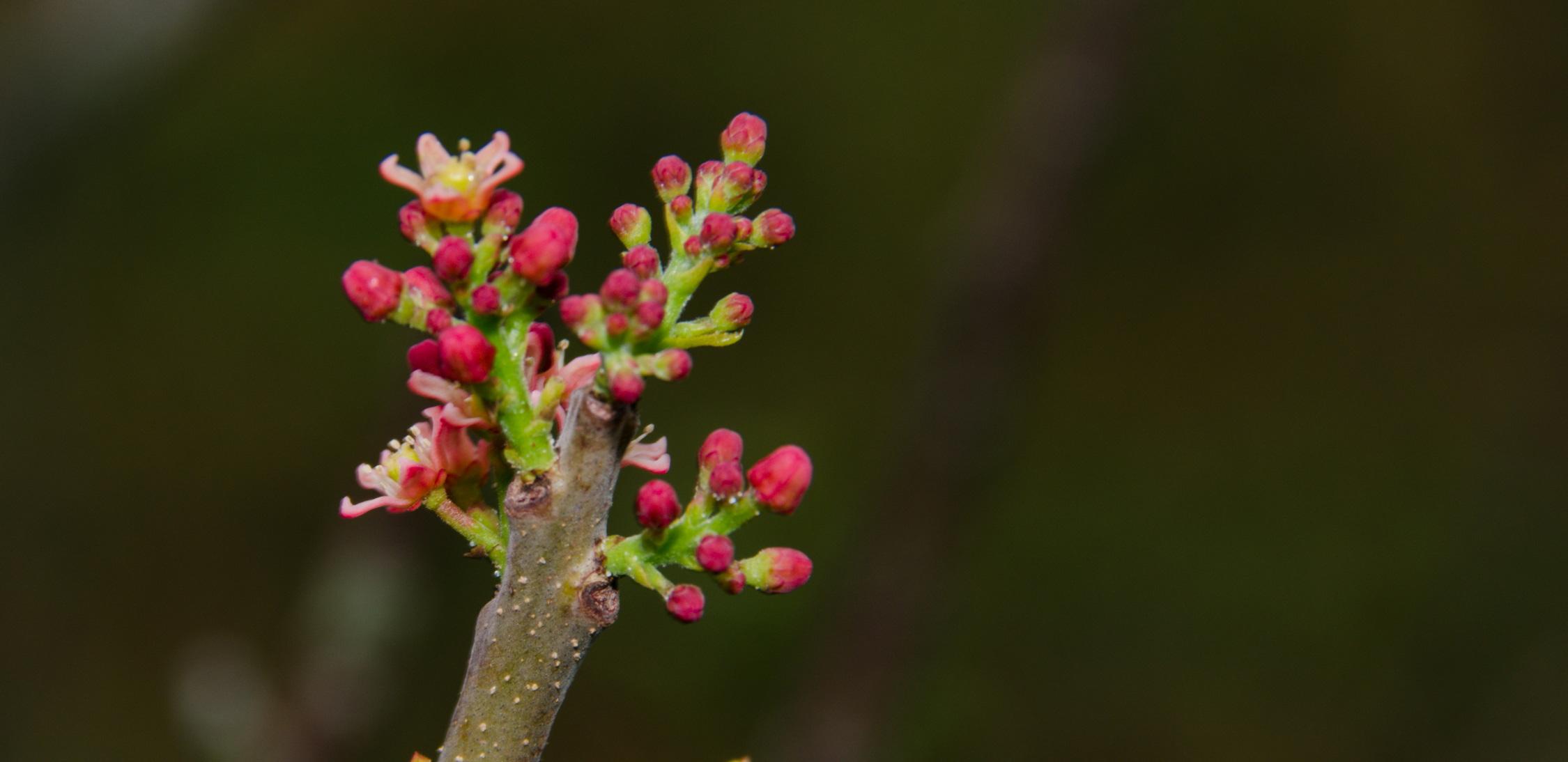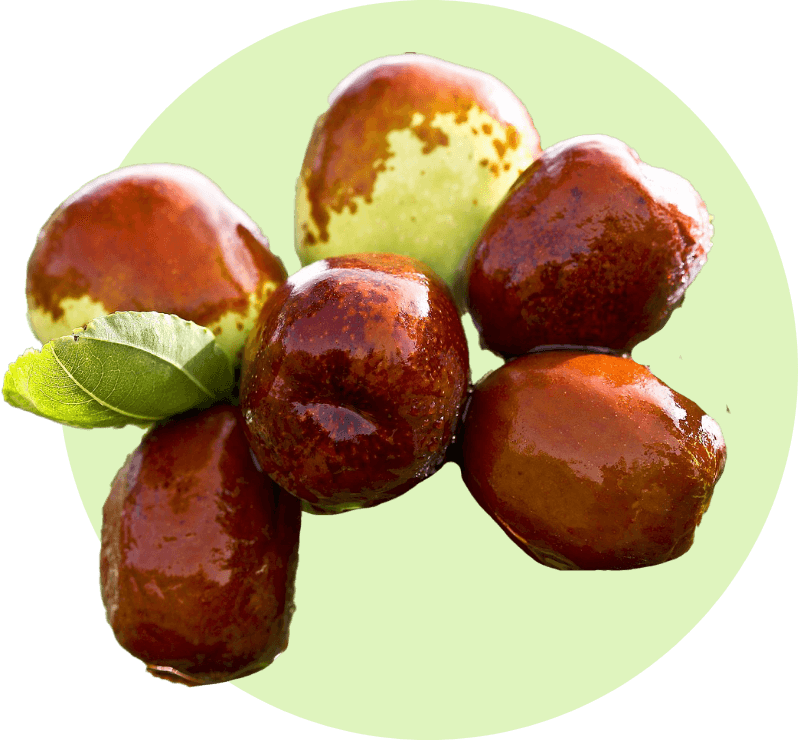
Purple Mombin / Ciruela Jobo-morada
Scientific Name: Spondias purpurea
Origin: South America
Botanical Family: Anacardiaceae
Purple mombin is a tropical, drought-resistant tree cultivated in the Americas for its plum-like, antioxidant-rich fruit.
Brief History and Description
Purple mombin is a tree with a spreading crown. It reaches a height of 25 meters. This tree is widely cultivated in tropical regions, especially in the Americas, for its edible fruits. The yellow pulp of the fruit is juicy and tastes like plum.
Culinary Usage and Nutritional Properties
Purple mombin fruit is rich in vitamin C and carbohydrates. They are a source of calcium, phosphorus, iron, and a small amount of fiber. They contain carotene, B-complex vitamins, and several important amino acids. Purple mombin fruits are high in antioxidants. The leaves contain 5.5 percent protein.
Purple mombin fruits are made into a tart sauce or pickled in vinegar and eaten with chili pepper and salt. Its paste is used to make drinks. Whole fruits are boiled in water with sugar and sometimes other fruits to make syrup or honey. It is eaten with ice cream or alone as a dessert. The fruits are fully cooked to prepare canned food. Dried fruits are preserved for several months. Also, the young leaves can be cooked. And the thick gummy coating of the seeds is used in pepper stew.
Economic and Environmental aspects
The Purple Mombin, an endangered plant, significantly contributes to the environment, especially in areas prone to soil erosion. As a deciduous tree, it enriches the soil by cycling nutrients. This species is remarkably drought-resistant, making it adaptable to harsh conditions. Moreover, it bears fruits that sustain wildlife during the dry season. Its ability to thrive in nutrient-poor soil and its early harvest properties demonstrate notable resilience and utility.
Purple mombin fruits have promising market potential. Also, tree sap or gum is used as glue. And some cosmetic products, such as soap, are produced from parts of this tree.
Annual Yield
A single tree can produce up to 50 kg of fruit per year.
Pharmacological Activities and Bio-active Properties
- Purple mombin is high in antioxidants, which help rid the body of free radicals,
- The fruits are diuretic and antispasmodic,
- They are used as an antihistamine,
- The bark extract is used for stomach upsets such as dysentery,
- This fruit is a laxative and is used to treat constipation,
- The leaves have antibacterial properties,
- Leaf juice is taken orally to treat swollen glands and trauma,
- Crushed leaves are used as a poultice to treat headaches,
- Bark sap is used to treat stomatitis in babies,
- The juice of fresh leaves is a medicine for thrush,
- A decoction of its leaves and bark is used as a fever reducer,
- Gum tree gum is mixed with pineapple or sour juice to treat jaundice.
Green Your Inbox!
With our Newsletters, Stay updated on our Stories of Change and Growth.
As a gift, get a personalised Nature E-card from PH.




